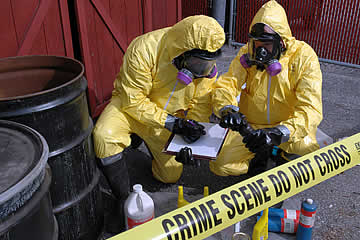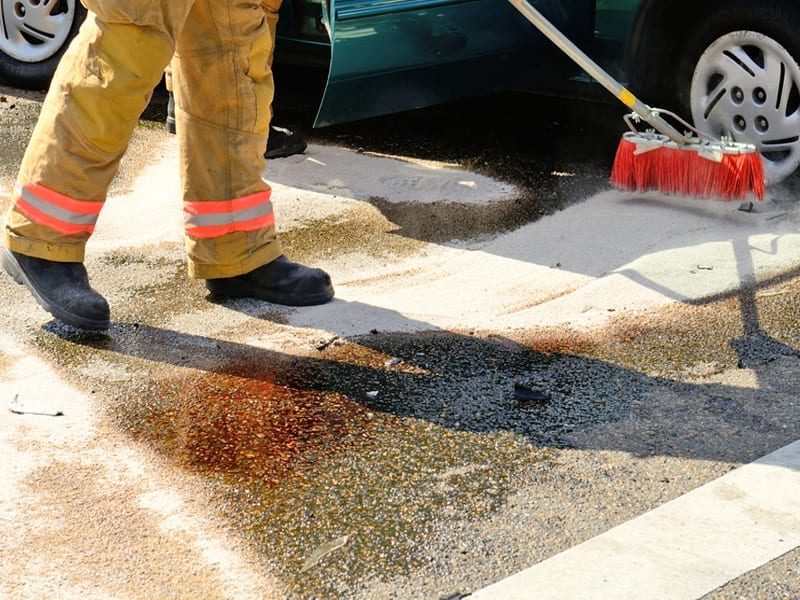Clandestine Lab Cleanup: Comprehensive Purification for Hazardous Sites
Clandestine Lab Cleanup: Comprehensive Purification for Hazardous Sites
Blog Article
Specialist Biohazard Cleansing and Decontamination for Blood, Bodily Fluids, and Hazardous Materials
In the realm of biohazard cleaning and purification for blood, bodily fluids, and harmful products, precision and knowledge are vital. The possible health threats related to exposure to biohazards highlight the critical requirement for precise handling and extensive cleanup. Specialized training outfits experts with the understanding and skills required to address these dangerous circumstances effectively. Nonetheless, it is not just regarding tidying up; the importance of utilizing correct decontamination methods can not be overemphasized. As we navigate the complex landscape of biohazard cleanup, recognizing the nuances of regulations, conformity, and the customized equipment at play comes to be important in guaranteeing a safe and thorough purification process.
Health And Wellness Dangers of Biohazard Direct Exposure
Exposure to biohazards poses substantial wellness risks that can cause serious repercussions for people and areas alike. Biohazards include a wide variety of organic substances, consisting of blood, physical liquids, mold and mildew, bacteria, infections, and other potentially contagious products. When individuals enter into call with these biohazards, whether through accidents, inappropriate handling, or environmental direct exposure, they face the danger of having significant health problems or diseases.
One of the key health and wellness dangers related to biohazard exposure is the transmission of infectious conditions. Bloodborne microorganisms such as HIV, liver disease B and C, and various microorganisms can be present in biohazardous products, posturing a straight hazard to human health and wellness. Breathing in airborne biohazards like mold spores or coming into call with polluted surfaces can additionally bring about respiratory system issues, allergies, and various other unfavorable wellness results.
Moreover, biohazard exposure can have long-lasting health ramifications, with some conditions manifesting years after the preliminary get in touch with (Blood Cleanup). Consequently, it is essential to prioritize appropriate biohazard cleaning and decontamination to alleviate these health threats and make sure the safety of areas and individuals

Specialized Training for Biohazard Cleaning
When it involves handling biohazard cleanup efficiently and securely, specialized training plays a fundamental role in making sure correct decontamination procedures are followed. Biohazard clean-up requires certain understanding and skills to successfully mitigate risks connected with bloodborne pathogens, bodily liquids, and unsafe products. Experts learnt biohazard clean-up undertake extensive guideline on how to securely deal with, eliminate, and throw away biohazardous materials to stop contamination and exposure.
Specialized training for biohazard cleaning covers a range of vital subjects, including appropriate personal safety tools (PPE) usage, bloodborne microorganism understanding, decontamination strategies, and hazardous waste disposal procedures. Individuals learnt biohazard cleanup are outfitted with the required competence to assess contamination degrees, determine prospective threats, and execute appropriate cleaning procedures in conformity with regulative requirements.
Continual training and education and learning are paramount in the area of biohazard cleanup to stay upgraded on the latest decontamination innovations, safety methods, and regulations. By buying specialized training, biohazard clean-up experts can efficiently reply to emergency situation cleaning circumstances and secure both public health and the setting.
Importance of Appropriate Decontamination Methods
Making use of correct purification techniques is important in biohazard clean-up to properly reduce and remove hazardous products wellness risks. Reliable purification not just ensures the removal of visible traces of blood, bodily liquids, and other biohazards yet also targets unnoticeable pathogens that might present serious health and wellness hazards if not appropriately gotten rid of. By complying with strict purification protocols, educated professionals can substantially decrease the risk of exposure to hazardous bacteria, infections, and bacteria that could result in conditions or infections.
Proper purification strategies include the use of specialized tools and anti-bacterials that are specifically made to counteract biohazards effectively. Extensive cleansing and sanitation of contaminated locations are important to stop the spread of microorganisms and ensure a important link risk-free environment for passengers. Additionally, the appropriate disposal of biohazardous waste complying with purification treatments is essential in protecting against contamination of other surfaces or people.

Equipment and Tools for Safe Clean-up
The correct equipment and devices play an essential function in making certain the reliable and risk-free cleaning of biohazardous materials. When managing blood, bodily liquids, or hazardous products, biohazard cleaning specialists rely on specialized equipment to minimize direct exposure dangers and thoroughly decontaminate the affected location. Individual safety devices (PPE) such as gloves, masks, goggles, and coveralls are essential to protect against direct contact with potentially contagious products. Additionally, biohazard cleansing kits having disinfectants, absorbing materials, and biohazard bags are made use of to safely dispose and have of polluted products. Blood Cleanup.
Advanced cleansing tools like hospital-grade disinfectants, HEPA-filtered vacuum cleaners, and fogging devices are used to sanitize surface areas and get rid of biohazards properly. Specialized equipment such as sharps containers and biohazard waste disposal containers are utilized to safely handle sharp objects and biohazardous waste products. By making use of the ideal tools and tools, biohazard cleaning professionals can why not try here make certain a detailed clean-up process that focuses on security and reduces health risks for both workers and passengers of the afflicted room.
Regulations and Compliance in Biohazard Cleaning
Appropriate adherence to laws and compliance requirements is extremely important in biohazard cleaning to make sure the safety and security of both personnel and the setting. Federal government companies such as OSHA (Occupational Security and Wellness Administration) and the EPA (Environmental Security Company) have developed details standards for biohazard cleaning treatments to decrease wellness risks and ecological contamination. These policies cover a variety of elements including the handling, transportation, and disposal of biohazardous products, as well as the necessary training and protective tools needed for workers associated with the cleaning process.
Biohazard cleaning business should remain current with these policies to assure that their operations meet the called for safety criteria. Failure to adhere to these laws can cause serious repercussions, including fines, lawful action, and threatening the wellness of individuals and the environment. By complying with stringent guidelines and conformity procedures, biohazard cleansing companies can effectively alleviate dangers and make sure a comprehensive and risk-free cleanup procedure for all parties entailed.
Final Thought
Finally, biohazard cleansing and purification need specialized viscera cleanup detail bloody toilet training, appropriate methods, and adherence to laws. Exposure to blood, physical liquids, and harmful materials poses considerable health and wellness dangers, making it critical to use the appropriate tools and tools for secure cleaning. By following stringent methods and guidelines, professionals can efficiently minimize the threats associated with biohazard exposure and ensure the safety and security of both themselves and others.
As we navigate the elaborate landscape of biohazard cleaning, recognizing the subtleties of guidelines, compliance, and the specific equipment at play becomes imperative in making certain a comprehensive and secure purification procedure. (Blood Cleanup)
When it comes to dealing with biohazard clean-up efficiently and securely, specialized training plays a basic role in making certain proper decontamination treatments are followed.Utilizing proper purification techniques is crucial in biohazard cleanup to properly eliminate dangerous materials and decrease health threats. Additionally, biohazard cleansing packages containing disinfectants, absorbing materials, and biohazard bags are used to securely dispose and contain of infected items.
Federal government firms such as OSHA (Occupational Safety and Health Administration) and the EPA (Environmental Defense Firm) have established specific standards for biohazard cleanup procedures to reduce health threats and ecological contamination.
Report this page